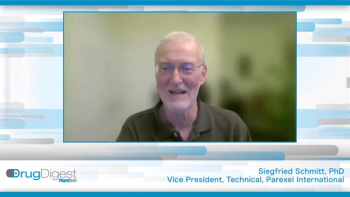
The Evolving Oncology Landscape
Key Takeaways
- Cell therapies, including CAR T-cells, are advancing hematologic cancer treatment and expanding into solid tumors, but face manufacturing complexities and high costs.
- Strategic consolidations, such as BioNTech's acquisition of CureVac, aim to enhance mRNA capabilities and accelerate next-generation immunotherapy development.
Recent developments show how innovations and treatments for cancer are rapidly advancing.
The word ‘cancer’ can create fear in anyone directly impacted by the disease. However, patients, and their families, may find some comfort in the convergence of biological understanding and technology that has the oncology landscape undergoing a transformation (1). There has been a strategic pivot in the past few years from traditional drug development models toward complex, curative modalities and novel mechanistic approaches. Success in this area hinges not only on discovery but on addressing manufacturing, delivery, and scalability challenges that exist in these next-generation treatments (1).
What does the cell and gene therapy frontier hold?
Cell therapies, such as chimeric antigen receptor (CAR) T-cells, have advanced the treatment of hematologic cancers, demonstrating the potential for long-term, durable remissions and curative responses (2–4). The field is also rapidly evolving to tackle the greater challenge of solid tumors, which account for 90% of cancers (2).
CAR T-cells traditionally focus on blood cancers; however, innovation is expanding toward tumor-infiltrating lymphocytes (TILs), which are derived from immune cells already present in the tumor microenvironment (2). TILs offer inherent tumor specificity, making them a promising route for solid tumor indications like lung and cervical cancers (2). Simultaneously, researchers are advancing CAR Natural Killer (NK) cells and adoptive T-cell receptor therapies for various malignancies (3).
While this acceleration in innovation is promising, it comes with critical manufacturing complexity. Traditional autologous cell therapies require complex, individualized cell processing and cold-chain logistics, contributing to high costs and scalability bottlenecks (1, 2, 5). Robust engineering and process design that focus on automation and rapid testing/release processes are needed.
To continue on the innovation train, the industry is strategically consolidating platform technologies. BioNTech’s acquisition of CureVac is a significant move aimed at strengthening the former’s messenger RNA (mRNA) capabilities, specifically accelerating the development and manufacturing of next-generation mRNA immunotherapies for oncology (6). This reflects a broader trend of "platformization," leveraging a single technology across multiple indications to speed up development cycles.
A significant manufacturing trend to watch is the shift toward in-vivo CAR-T generation (1, 5). Platforms utilizing targeted lipid nanoparticles (LNPs), such as NanoCell’s NCtx system, can deliver CAR-T DNA directly in vivo via a non-viral, single intravenous dose (5). This delivery strategy aims to eliminate the complex ex-vivo modification, vector manufacturing, and logistics associated with conventional CAR-T, thereby lowering costs and expanding patient access (5). While LNPs currently target muscle and liver effectively, expanding delivery to immune cells in the spleen for in-vivo cell therapy is a promising preclinical area (1).
How are investments and technology being enabled?
New treatment modalities, including antibody-drug conjugates (ADCs) and radiopharmaceuticals (RPTs), continue to diversify the oncology pipeline (1,2). For RPTs, the focus is on optimizing targeting agents and using new isotopes. This field is highly regulated; the FDA recently issued draft guidance emphasizing the necessity for sponsors to identify optimized dosages during clinical development, requiring a deeper understanding of pharmacodynamics, toxicity, and dosimetry (7).
Infrastructure and technology are crucial in supporting these breakthroughs. Large-scale global collaborations, such as the £1 billion development of the London Cancer Hub, are designed to create dedicated centers featuring state-of-the-art research space, wet labs, and good manufacturing practice facilities. These hubs intentionally foster "collision points" between academic researchers, clinicians, and life sciences companies to drive innovation (8).
The adoption of digitalization and artificial intelligence (AI)/machine learning (ML) is increasingly central to oncology manufacturing and development (1). AI/ML allows for enhanced process optimization, particularly for personalized treatments like autologous advanced therapy medicinal products, where input may be unique to each batch. This technology translates easily, enabling adaptive processing and predictive modeling to streamline scale-up journeys and minimize manufacturing surprises (1).
The oncology pipeline is marked by heterogeneity and complexity (1). Moving forward, pharmaceutical scientists must navigate the intersection of advanced biology, next-generation delivery platforms, and operational scalability to translate today’s laboratory success into tomorrow’s transformative medicines (1).
References
- Haigney, S. New Modalities in Biopharmaceutical Development Transform Industry. BioPharm International 2025 38 (5) 8-11.
- Haigney, S. Emerging Treatments for Cancer. BioPharm International, Next-Generation Biotherapeutics eBook, April 2025.
- Haigney, S. MD Anderson Launches Cell Therapy Institute. BioPharmInternational.com, Nov. 11, 2024.
- March Biosciences. March Biosciences Doses First Patient in Phase 2 Trial of CAR-T Therapy for Rare Blood Cancer. Press Release, April 22, 2025.
- Lavery, P. NanoCell’s LNP Platform Shows Promise for In-Vivo CAR-T Development. BioPharmInternational.com, Aug. 6, 2025.
- Cole, C. CureVac to Be Acquired by BioNTech in $1.25B Deal to Advance mRNA Cancer Therapies. BioPharmInternational.com, June 12, 2025.
- Haigney, S. Medicines Discovery Catapult and Crown Bioscience Create Alliance for Radiopharmaceuticals. BioPharmInternational.com, Sept. 12, 2025.
- Haigney, S. Cancer Research and Treatment Center Planned for London. BioPharmInternational.com, May 1, 2025.
Newsletter
Get the essential updates shaping the future of pharma manufacturing and compliance—subscribe today to Pharmaceutical Technology and never miss a breakthrough.





